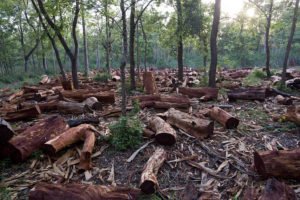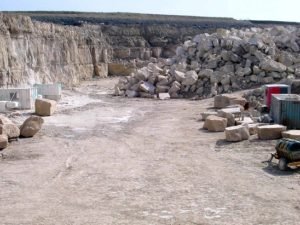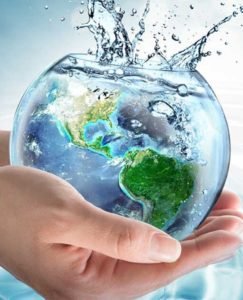Introduction
Global warming is the increase in average earth’s temperature over a period of time. These man made gases are also known as anthropogenic gases. The confusion about global warming surrounds greenhouse gases and their capacity to absorb heat. For one, greenhouse gases do not absorb heat, at least not in the same sense that a sponge absorbs water. Greenhouse gases are like mirror, in the same manner, one mirror reflects a person’s image to another, the atoms and molecules in greenhouse gases reflect heat from one to another. The earth’s temperature increases due to the emissions of greenhouses gases. Greenhouse gases like carbon dioxide(CO2), Methane(CH4), Nitrous oxide(N2O), Ozone(O3), Vapour and many other harmful gases play a significant role in contributing as greenhouse gases which in turn results in Global warming. The earth’s temperature is being increased every day. According to NASA, the Earth’s temperature has increased about 2⁰F (1⁰C) over the past 100 years. The greenhouse effect is a natural phenomenon. However the increase in greenhouse gases is linked to human activities.
ACTIVITIES RESPONSIBLE FOR GLOBAL WARMING
As we all now know the science behind the human induced climate change, do you know that the atmospheric carbon dioxide level is almost 45% higher than before the industrial revolution and this increase is caused by human activities. These illiterate human activities have caused the so known greenhouse gases to emanate more. These gases act like a blanket for infrared radiation, retaining radiative energy near the surface that would otherwise escape directly to space. The increased concentrations of these gases results in the greenhouse effect. The increase in these greenhouse effect impacts the earth’s natural radiative energy balance.
Below listed are only a few human activities that cause major trouble to the environment.
Burning fossil fuels
The burning of fossil fuels releases harmful gases into the environment. Coal, Crude oil, Natural gas are considered fossil fuels. Mining, drilling, burning dirty energy is harming the environment and our health. Harmful gases like carbon dioxide, sulphur dioxide, methane and nitrous oxide are released into the atmosphere. China emits 10,357 million metric tons of CO2, United states about 5414 million metric tons and India about 2274 million metric tons. These emissions of harmful gases contribute to the formation of greenhouse gases resulting in climate change.
Deforestation or Over agriculture
Both deforestation and over agriculture mean the same thing.i.e destroying forest regions for agriculture purposes. Humans hunt down the entire forest for their own selfish needs. When these forests are cleared, most of the carbon in the burned or decomposing trees escapes to the atmosphere. However when new trees are planted, the growing trees absorb the carbon dioxide, removing it from the atmosphere. Recent net deforestation has occurred mainly in the tropics. It is estimated that more than 1.5 billion tons of carbon dioxide is released into the atmosphere due to deforestation every year.

Lime production (calcium oxide)
The cement industry is one of primary producers of calcium oxide and carbon dioxide, potent greenhouse gases. Cement manufacture contributes greenhouse gases both directly through the production of carbon dioxide when calcium carbonate is thermally decomposed, producing lime and carbon dioxide, and also through the use of energy, particularly from the combustion of fossil fuels. It generates more than 2 billion tons of CO2 around the planet.

Methane
The second most important gas next to carbon dioxide, methane is produced by cattle, buffalos, goats, sheep, pigs and horses. Most livestock-related methane emissions are produced by “enteric fermentation” of food by bacteria and other microbes in the animals’ digestive tracts; another source is the decomposition of animal manure. Livestock account for about one-quarter of the methane emissions from human activities, totalling some 100 million tonnes a year.

Waste disposal
When garbage is buried in a landfill, it sooner or later undergoes anaerobic decomposition and emits methane and some carbon dioxide. Unless the gas is captured and used as a fuel, the methane eventually escapes to the atmosphere. This source of methane is more common near cities, where garbage from many homes is brought to a central landfill, than in rural areas where garbage is typically burned or left to decompose in the open air. Methane is also emitted when human waste (sewage) is treated anaerobically, for example in anaerobic ponds or lagoons.

Overuse of fertilizers.
During agriculture process, fertilizers along with pesticides and insecticides are used to prevent plants from pests and weeds. These excessive use of chemicals results in enhancement of the natural processes of nitrification and DE nitrification that are carried out by bacteria and other microorganisms in the soil. These processes convert some nitrogen into nitrous oxide. The amount of N2O emitted for each unit of nitrogen applied to the soil depends on the type and amount of fertilizer, soil conditions, and climatic conditions of that region.

Emissions of CFCs
CFCs or chlorofluorocarbons are to be blamed for global warming since the industrialisation period. Most importantly in this case, industries are not only the affecters but we merely common men and women too. Of course the industries emit a large amount of chlorofluorocarbons but what about the household things that affect our environment. That’s right, every time we use A/c or refrigerators; those devices contribute a small share in affecting the environment.
These are some the common factors that affect the environment as a whole and causes global warming.
How do we prevent global warming? What are the measures that can be taken by us?
Yes, the world is heating up at an unprecedented rate. Every summer is most unbearable than the last. Massive fires devastate our forests. But good news is we still have time and we can take severe measures to prevent it from rising up. Nations around the world are upping their game in the fight against climate change. Many have adapted eco-friendly products that do not cause much trouble to the environment.
Here are a few resources that can be adopted in our life to prevent global warming in the long run.
Renewable energy
Renewable energies are those energies which are collected from the renewable resources, which are naturally replenished on a human time scale. Energy sources such as sunlight, wind, rain, water current, geothermal heat are considered as renewable energy. These energy sources can never be depleted. They are completely different from fossil fuels. Additionally, renewable energy sources are usually much more environment friendly than fossil fuels.

Reduce water waste
A lot of water is being wasted all around the world. The fresh water sources is depleting at an alarming rate. People spend water as if it is a renewable resource, but unfortunately it’s not. Save water as much as you can. Saving water reduces carbon pollution, too. That’s because it takes a lot of energy to pump, heat, and treat your water. So try to take short showers, turn off the tap while brushing your teeth, and switch to water saving appliances like water saving nozzles, water saving aerators which may save up to 97% of your total water consumption.

Reduce automobile transportation
Walk more and drive less. Reducing your consumption on automobiles may save up to 40% on combustion of fossil fuels. It also reduces emission of carbon dioxide from combustion of fossil fuels. Use public transportation more rather than using your personal vehicle.

Sustainable agriculture
Agriculture is necessary for human food consumption. But destroying forests for agriculture purposes is not necessary. Too much agriculture results in emission of carbon dioxide, nitrous oxide, carbon monoxide into the atmosphere. These gases can only be absorbed by trees and plants. If the existing forest is destroyed without implanting new trees, the carbon chemicals emitted from the agriculture lands will affect the climate change of the environment resulting in global warming. Not only that, there will be a deduction in the oxygen level due to lack of trees. The Amazonian rainforests are being destroyed in the need for agricultural lands and for the purpose of cattle grazing. It is advocated the sustainable amount of agricultural lands be created than abolishing the entire forest
Responsible consumption &Recycling
Adopting responsible consumption habits is crucial, be it regarding food, clothing, and luxuries or cleaning products. Stop purchasing things if they are of no use as it may be useful to the other party. Too much purchasing of non-renewable resources results in depletion of available resources and in turn results global warming. Always purchase products which can be recycled and reused as non-recyclable products form as waste once their work is done and these waste pollute the environment. When these non-eco-friendly wastes are dumped they tend to occupy a vast area of lands, which cannot be used for other eco-friendly purposes. Always practice Reduce, Reuse and Recycle. Try to avoid plastics in most case, and tend to rely on natural utensils as they tend to be healthy and they do not possess threat to the environment.

These are some of the ways one can adopt to save the environment from global warming.


